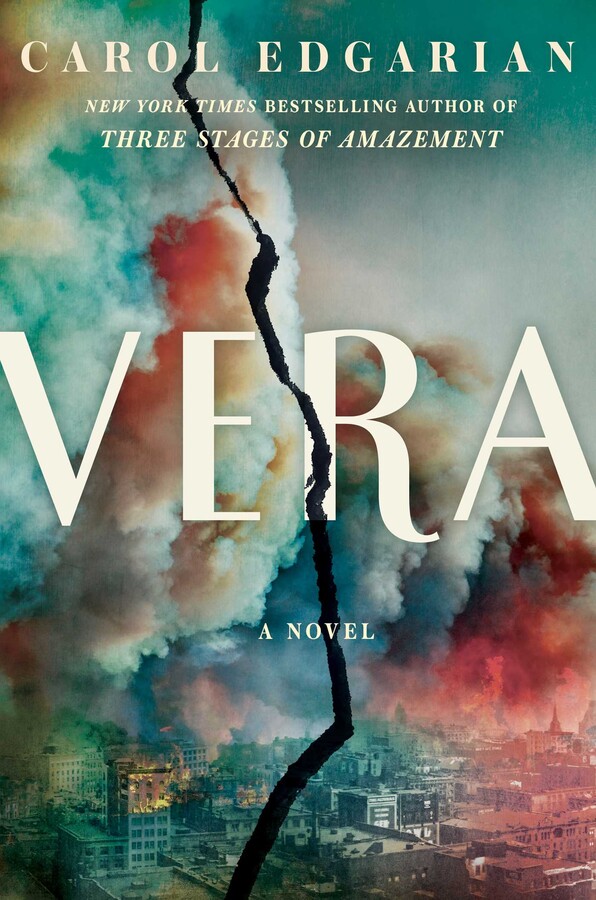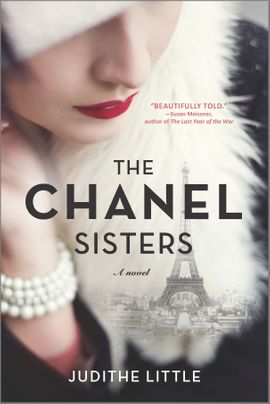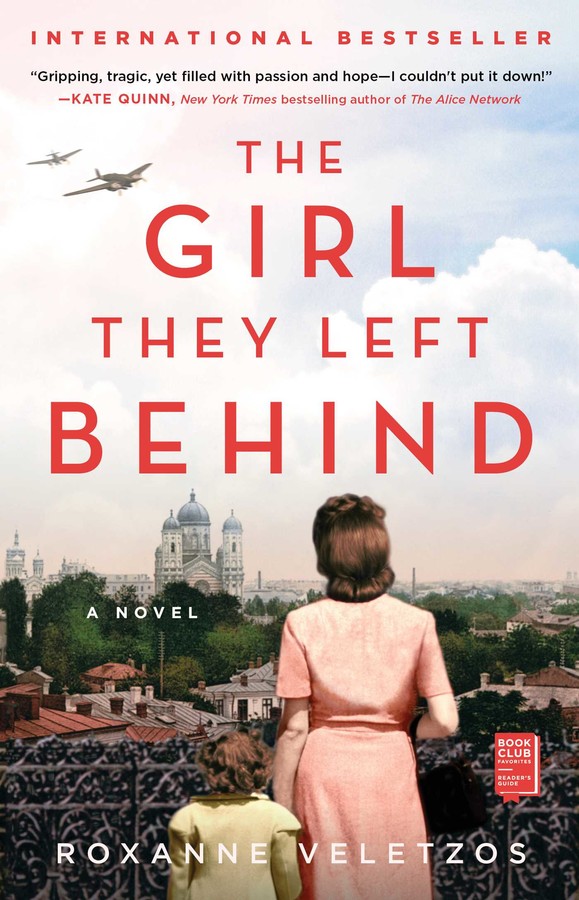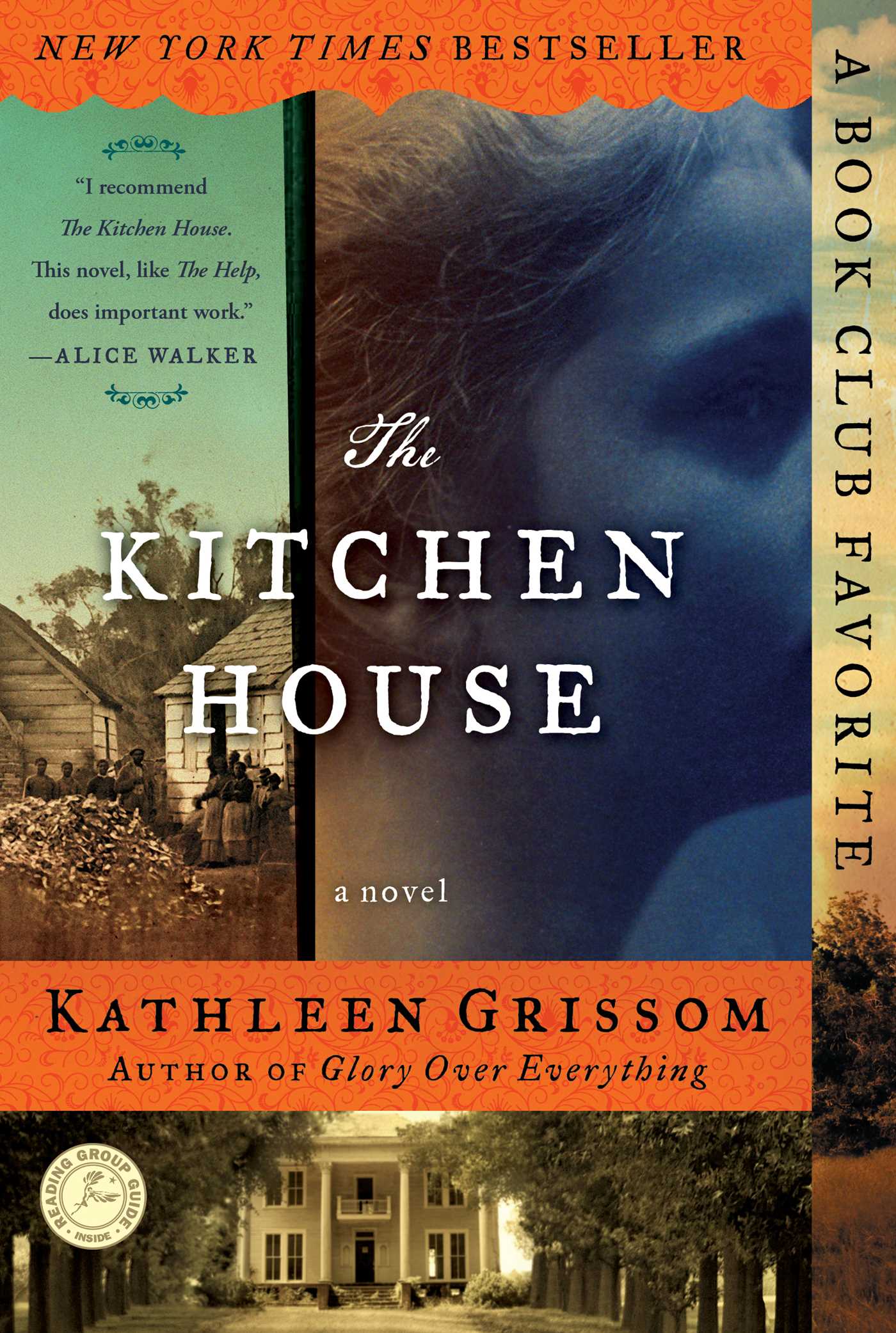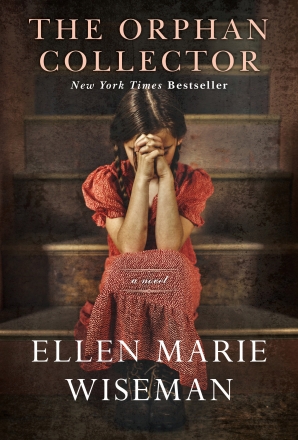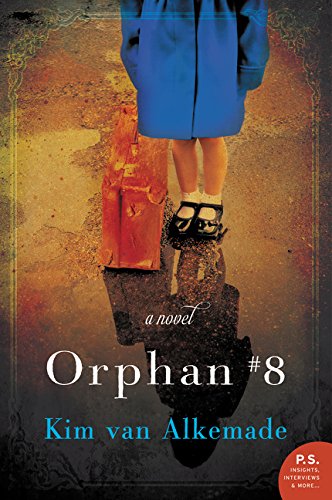Sure, everyone knows Annie and Oliver Twist, but there are so many more historical fiction novels about orphans out there who persevere against all odds. These stories will seriously tug at your heartstrings as they explore the hardships and triumphs of childhood. They also explore a vast range of time periods—ranging from 1960’s Laos to 1906 San Francisco—describing interesting parcels of history through the lenses of several courageous characters.

10 Historical Novels about Orphans and the Power of Found Family
William Kent Krueger is a master storyteller and THIS TENDER LAND is filled with so much adventure and heart. Set in 1932, Odie and his brother are confined to the horrible Indian Training School for orphans in Minnesota. The boys are forced to flee after committing a terrible crime. They are then joined by their best friend, Moose, and a young girl named Emmy. Together they steal a canoe and set off in search of a real home. This is part historical fiction, part coming-of-age novel that depicts the hardships of Native American boys in the thirties, the Great Depression, and what it means to find a family. It’s been a minute since I finished this novel, but I still think about Odie, Albert, Moose, and Emmy.
For fans of Before We Were Yours and Where the Crawdads Sing, “a gripping, poignant tale swathed in both mythical and mystical overtones” (Bob Drury, New York Times bestselling author) that follows four orphans on a life-changing odyssey during the Great Depression, from the New York Times bestselling author of Ordinary Grace.
1932, Minnesota—the Lincoln School is a pitiless place where hundreds of Native American children, forcibly separated from their parents, are sent to be educated. It is also home to an orphan named Odie O’Banion, a lively boy whose exploits earn him the superintendent’s wrath. Forced to flee, he and his brother Albert, their best friend Mose, and a brokenhearted little girl named Emmy steal away in a canoe, heading for the mighty Mississippi and a place to call their own.
Over the course of one unforgettable summer, these four orphans will fly into the unknown and cross paths with others who are adrift, from struggling farmers and traveling faith healers to displaced families and lost souls of all kinds. With the feel of a modern classic, This Tender Land is an enthralling, big-hearted epic that is “more than a simple journey; it is a deeply satisfying odyssey, a quest in search of self and home” (Booklist).
MENTIONED IN:
This book took my breath away. The three orphans in this story, Alisak, Prany, and Noi, live through war, trauma, friendships, heartache, and so much more in this sweeping historical novel. Set in 1960s Laos, these teens are bonded together through their loss. While hiding out in an abandoned, bombed-out hospital, the kids meet Vang. Vang is a doctor who wants to save everyone he can, no matter the cost. Soon the teens find themselves working as motorcycle couriers, risking their lives to cross minefields. Despite surviving in their war-torn home, everything changes when Vang secures them passage on an evacuation helicopter. But this act comes at a cost and may put them in even more danger.
From award-winning author Paul Yoon comes a “spellbinding” (The Washington Post) novel about three kids orphaned in 1960s Laos—and how their destinies are entwined across decades, anointed by Hernan Diaz as “one of those rare novels that stays with us to become a standard with which we measure other books.”
Alisak, Prany, and Noi—three orphans united by devastating loss—must do what is necessary to survive the perilous landscape of 1960s Laos. When they take shelter in a bombed out field hospital, they meet Vang, a doctor dedicated to helping the wounded at all costs. Soon the teens are serving as motorcycle couriers, delicately navigating their bikes across the fields filled with unexploded bombs, beneath the indiscriminate barrage from the sky.
In a world where the landscape and the roads have turned into an ocean of bombs, we follow their grueling days of rescuing civilians and searching for medical supplies, until Vang secures their evacuation on the last helicopters leaving the country. It’s a move with irrevocable consequences—and sets them on disparate and treacherous paths across the world.
Spanning decades, this “richly layered” (The New York Times Book Review, Editors’ Choice) book weaves together storylines laced with beauty and cruelty. Paul Yoon’s “greatest skill lies in crafting subtle moments that underline the strange and specific sadness inherent to trauma” (Time) and this book is a breathtaking historical feat and a fierce study of the powers of hope, perseverance, and grace.
Okay, so Vera isn’t exactly an orphan, but, in many ways, she is and her story fits right in among this list. Vera is the practically abandoned daughter of a prominent brothel owner, straddling two worlds in 1906 San Francisco. Vera is only invited into the alluring brothel world a few times a year and is mostly raised by her cold foster family. But in the wake of a great and terrible earthquake, both of her worlds come crashing down. Vera is forced to cast aside societal norms and forge a new life for herself and her unlikely family of survivors. Edgarian weaves together tragedy and nuance and wit so incredibly well that you won’t be able to put this book down.
New York Times bestselling author Carol Edgarian delivers an astonishing feat of imagination, a grand adventure set in 1906 San Francisco—a city leveled by quake and fire—featuring an indomitable heroine coming of age in the aftermath of catastrophe and her quest for love and reinvention.
Meet Vera Johnson, the uncommonly resourceful fifteen-year-old illegitimate daughter of Rose, notorious proprietor of San Francisco’s most legendary bordello and ally to the city’s corrupt politicians. Vera has grown up straddling two worlds—the madam’s alluring sphere, replete with tickets to the opera, surly henchmen, and scant morality, and the violent, debt ridden domestic life of the family paid to raise her.
On the morning of the great quake, Vera’s worlds collide. As the shattered city burns and looters vie with the injured, orphaned, and starving, Vera and her guileless sister, Pie, are cast adrift. Vera disregards societal norms and prejudices and begins to imagine a new kind of life. She collaborates with Tan, her former rival, and forges an unlikely family of survivors. Together they navigate their way beyond disaster.
In Vera, Carol Edgarian creates a cinematic, deeply entertaining world, in which honor and fates are tested; notions of sex, class, and justice are turned upside down; and love is hard-won. A ravishing, heartbreaking, and profound affirmation of youth and tenacity, Vera’s story brings to life legendary characters—tenor Enrico Caruso, indicted mayor Eugene Schmitz and boss Abe Ruef, tabloid celebrity Alma Spreckels—as well as an unforgettable cast that includes Vera’s young lover, Bobby, protector of the city’s tribe of orphans, and three generations of a Chinese family competing and conspiring with Vera.
This richly imagined, timely tale of improbable outcomes and alliances takes hold from the first page, gifting readers with remarkable scenes of devastation, renewal, and joy. Told with unflinching candor and wit, Vera celebrates the audacious fortitude of its young heroine and marks a stunning achievement by an inventive and generous writer.
MENTIONED IN:
First of all, who wouldn’t want to read a sweeping historical fiction book about Coco Chanel and her sister? Second of all, who wouldn’t want to dive into French fashion? THE CHANEL SISTERS follows Gabrielle (Coco) and her sister Antoinette from their childhood raised by nuns to their fierce determination to be a part of the society that never accepted them. Eventually, they find themselves working in a hat shop in Paris and hanging out in stylish cafes, but everything changes when World War I breaks out.
Wicked, dark, enchanting, and full of imagination—SIN EATER is a unique historical fiction novel that follows fourteen-year-old May who is sentenced to be a Sin Eater for the crime of stealing a loaf of bread. Sin Eaters are shunned, forced to hear the confessions of the dying, and eat ritual foods to represent their sins at the funeral. May studies under an older Sin Eater, but when a deer heart shows up on the coffin of a governess and the older woman refuses to eat it, she is taken away and executed. Now May finds herself alone in an even more complicated world, and she is determined to find out who placed the deer heart on the coffin that leads to her mentor’s death. This story was so fascinating that I immediately wanted to learn more about this little-known piece of British history.
“A riveting depiction of hard-won female empowerment that weaves together meticulous research, unsolved murder—and an unforgettable young heroine.” —The Washington Post
The Handmaid’s Tale meets Alice in Wonderland in this gripping and imaginative historical novel about a shunned orphan girl in 16th-century England who is ensnared in a deadly royal plot and must turn her subjugation into her power.
The Sin Eater walks among us, unseen, unheard
Sins of our flesh become sins of Hers
Following Her to the grave, unseen, unheard
The Sin Eater Walks Among Us.
For the crime of stealing bread, fourteen-year-old May receives a life sentence: she must become a Sin Eater—a shunned woman, brutally marked, whose fate is to hear the final confessions of the dying, eat ritual foods symbolizing their sins as a funeral rite, and thereby shoulder their transgressions to grant their souls access to heaven.
Orphaned and friendless, apprenticed to an older Sin Eater who cannot speak to her, May must make her way in a dangerous and cruel world she barely understands. When a deer heart appears on the coffin of a royal governess who did not confess to the dreadful sin it represents, the older Sin Eater refuses to eat it. She is taken to prison, tortured, and killed. To avenge her death, May must find out who placed the deer heart on the coffin and why.
“A keenly researched feminist arc of unexpected abundance, reckoning, intellect, and ferocious survival” (Maria Dahvana Headley, author of The Mere Wife) Sin Eater is “a dark, rich story replete with humor, unforgettable characters, and arcane mysteries. It casts a spell on your heart and mind until the final page” (Jennie Melamed, author of Gather the Daughters).
Based on a true story, THE FORGOTTEN HOME CHILD is set in both 2018 and 1936 as Winnifred Ellis finally tells her great-grandson the truth about her childhood. In 1936, Winny lives on the streets with a small ragtag group of friends, but when they are caught stealing bread, she soon finds herself in an orphanage. Winny learns that she is going to be shipped off with other orphans to Canada where families and new opportunities await them. But instead, Winny is separated from her friends and sent to live with a family that doesn’t want a daughter and has instead paid for her to become an indentured servant on their farm. This novel feels so well researched and so incredibly moving.
The Home for Unwanted Girls meets Orphan Train in this unforgettable novel about a young girl caught in a scheme to rid England’s streets of destitute children, and the lengths she will go to find her way home—based on the true story of the British Home Children.
2018
At ninety-seven years old, Winnifred Ellis knows she doesn’t have much time left, and it is almost a relief to realize that once she is gone, the truth about her shameful past will die with her. But when her great-grandson Jamie, the spitting image of her dear late husband, asks about his family tree, Winnifred can’t lie any longer, even if it means breaking a promise she made so long ago...
1936
Fifteen-year-old Winny has never known a real home. After running away from an abusive stepfather, she falls in with Mary, Jack, and their ragtag group of friends roaming the streets of Liverpool. When the children are caught stealing food, Winny and Mary are left in Dr. Barnardo’s Barkingside Home for Girls, a local home for orphans and forgotten children found in the city’s slums. At Barkingside, Winny learns she will soon join other boys and girls in a faraway place called Canada, where families and better lives await them.
But Winny’s hopes are dashed when she is separated from her friends and sent to live with a family that has no use for another daughter. Instead, they have paid for an indentured servant to work on their farm. Faced with this harsh new reality, Winny clings to the belief that she will someday find her friends again.
Inspired by true events, The Forgotten Home Child is a moving and heartbreaking novel about place, belonging, and family—the one we make for ourselves and its enduring power to draw us home.
After Romania allies with the Nazi party, a young Jewish girl is left on the steps of an orphanage. She is quickly adopted by a wealthy family who loves her and names her Natalia. She grows up and seems to forget all about the parents that abandoned her at an orphanage to save her life, especially when Romania falls under Soviet control. But then she falls in love with Victor, an officer in the Communist regime who has dark secrets of his own. When a chance at freedom finally arises, Natalia must choose between the adoptive family and the man that she loves or confronting her past.
A sweeping historical romance that is “gripping, tragic, yet filled with passion and hope” (Kate Quinn, New York Times bestselling author), offering a vivid and unique portrayal of life in war-torn 1941 Bucharest during World War II and its aftermath—perfect for fans of Lilac Girls and Sarah’s Key.
On a freezing night in January 1941, a little Jewish girl is found on the steps of an apartment building in Bucharest. With Romania recently allied with the Nazis, the Jewish population is in grave danger so the girl is placed in an orphanage and eventually adopted by a wealthy childless couple who name her Natalia. As she assimilates into her new life, she all but forgets the parents who were forced to leave her behind.
As a young woman in Soviet Romania, Natalia crosses paths with Victor—an important official in the Communist regime that she used to know as an impoverished young student. Now they are fatefully drawn into a passionate affair despite the obstacles swirling around them and Victor’s dark secrets.
When Natalia is suddenly offered a one-time chance at freedom, Victor is determined to help her escape, even if it means losing her. Natalia must make an agonizing decision: remain in Bucharest with her beloved adoptive parents and the man she has come to love, or seize the chance to finally live life on her own terms, and to confront the painful enigma of her past.
The Girl They Left Behind “is a vividly told, beautifully written, impossible-but-true story” (Helen Bryan, internationally bestselling author of War Brides) that you won’t soon forget.
Set in the Antebellum south, THE KITCHEN HOUSE follows Lavinia, a white servant girl from Ireland who was brought to the tobacco plantation to live and work in the kitchen house. The story is told from the perspectives of Lavinia and Belle, the illegitimate daughter of the plantation owner, as Lavinia unleashes a horrible tragedy. Belle cares for Lavinia as a child even though she is set apart from the other slaves for having white skin. Lavinia forms a strong bond with her new family, but all of that is threatened when she is accepted into the master’s family and her loyalties are put to the test.
When a white indentured servant violates the delicate order of plantation society, she unleashes a tragedy that exposes the best and worst in everyone tied to the estate. Sweeping from 1790–1810, this is a heartbreaking, but ultimately hopeful, story of class, race, and familial bonds.
MENTIONED IN:
As the great-great-granddaughter of German and Italian immigrants who came to Philadelphia in the early 1900s, I was immediately intrigued by THE ORPHAN COLLECTOR. You mix that with the Spanish flu parallels to the current pandemic and this story morphed into something personal. Wiseman has crafted one of the most fascinating historical fiction novels that I’ve read in a while. While it was difficult with the current events, it was definitely worth the read. THE ORPHAN COLLECTOR follows thirteen-year-old German immigrant Pia as she navigates the streets of Philadelphia while the Spanish flu breaks out. Pia's father enlists in the U.S. Army and leaves Pia to gather supplies on her own. Here we meet Bernice, a young mother who lost her baby to the flu, who decides to tear families apart to turn the orphans and immigrants of the city into “true” Americans. When Pia wakes up at the St. Vincent’s Orphan Asylum, she’ll have to risk everything to get justice.
What would you do if you could confront the doctor who subjected you to dangerous medical experiments as an orphan? Alkemade asks the same question in ORPHAN #8 when Rachel Rabinowitz must choose between revenge and mercy. When Rachel was four years old, she was subjected to medical experiments that left her disfigured. At fifteen she ran away in search of her brother and a new family. Now, Rachel is back in New York working as a nurse when the very same doctor who tortured her now arrives as a cancer patient. Rachel becomes obsessed with getting Dr. Solomon to acknowledge what he did to her. But as the days pass, she realizes that not everything is as black-and-white as it seems.
Photo credit: Simon & Schuster











